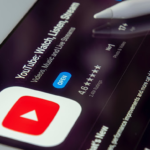 Membership TodaySign Up Now
Membership TodaySign Up NowVideo Transcript
Best strategies for your campaigns
Brady: Hi everyone, this is Brady with TubeSift, and today I hopped on a call with Michael Szapkiw, who’s one of our coaches and he helps a lot with TubeSift, so he’s been helping a lot of people with their YouTube ad campaigns. So Michael, yeah, thanks. I know a lot of people have been having great feedback and starting to run some really great campaigns from scratch with your help. So yeah, I just wanted to bring you on and see if … What are some of the main things that you see people come across and what are the best strategies to address those?
Michael Szapkiw: We really have a great community with TubeSift, people that are part of some of the courses that we have, where we walk people through step by step how to set up your YouTube campaigns and set it up the right way the first time so you’re not wasting a lot of money. We also have a great open group. People are always in there helping each other answer questions. So today we just wanted to sort of go over a couple of the things that I see a lot, the questions that people are asking whether it’s in the weekly coaching calls that we do or one on ones or just in the groups.
So a couple of things that have come up for me. Well, before I get into a couple of the points, what I’d like to say, first of all is that for people that are starting and doing YouTube ads or Google ads to begin with, it’s progress, not perfection. It’s one of my favorite quotes just across the board. If you’re starting out, the best thing you can do is really jump in, start learning the material and actually start doing it. Even if you’re just starting a campaign that’s let’s say $5 a day, go in there, create your first video ad, keep it simple. Go in there, create your first campaign, do simple targeting, and just launch a campaign of some sort for something that you have to sell.
Or even if you don’t have anything to sell, find something in an affiliate network like ClickBank that you can just start selling something, because really that’s one of the best things that you can do is really just to dive in, do it, and sort of learn from the process. So that’s always one of my first suggestions for people and that’s who we see the most success from in our students, in coaching clients, is that they’re in, they’re doing it themselves, and they’re following up with questions in the groups and just really committed to learning the whole process. So that’s where I want to start with that.
1. Choose your budget
So that aside, a couple of the more specific things that people do ask are first of all, one of the things is budget. And a lot of people think do I have to spend hundreds and thousands of dollars just to get started running ads? And the answer is no to that. There’s not a specific amount of money that you have to spend or need to spend, and it’s going to vary from niche to niche, product to product. Obviously, if you’re selling a $2,000 product, you’re probably going to have to invest more money on the front end testing and narrowing in on a winning campaign than you would if you were selling like a $50 product, right?
So you can start as low as $5, and again, if you’re starting your very first campaign, I’d recommend just starting with $5 a day and just getting going through that process again, of learning and just figuring out what your settings are. Because sometimes it’s easy to miss some settings in YouTube ads and in the campaign, and you might not … If you’re using high budget, five days go by and you’re a newbie edit, and you realize oh man, I had this wrong setting in here and I wasn’t getting a result. So sometimes that’s just a good to do too just to start a lower budget, make sure you have your campaigns set up correctly and that sort of thing.
So $5 a day budget, get started with that. You can do that. So here’s the basic … Here’s the main thing with budgeting, you can spend $5 a day, but you still might have to spend over a seven day period, so maybe you have to still spend $35 or you have to spend up to a $100 to really get enough data to make decisions on your campaigns. So sometimes it’s just sort of that trade off, it’s like do I want to learn quickly and drop $50 or $100 a day on ads. Maybe I can learn that in a few days, what’s working and what’s not. Or do I need to go slower and just do $5 a day over the course of a week or a couple of weeks, right? So sometimes it’s just a trade off, what’s your budget, what you can afford, and how far your sense of security needs to go with how much you’re spending. So that’s the first thing.

2. Campaign targeting
The second thing I had noted is a campaign, just the overall campaign structure targeting audience, and I won’t dig into the weeds with a lot of that specifically, because it’s sort of like good for video walkthrough, over the shoulder, kind of a thing, but generally speaking, there’s some main targeting that we recommend with TubeSift. If you have TubeSift, we take a lot of the work out for you because one of the best ways you can target people, especially broad audiences that are regionally based placements are the way to go.
And so what are placements? Placements are when you’re specifically finding videos that would be highly relevant to the audience that you’re targeting. So if I was targeting dog owners for a dog leash or a dog product, then I would want to pull a lot of different placement videos or just videos that are on YouTube and target dog videos. So one of the best ways that you can target someone is when hey, I already know dog owners or dog lovers are watching these videos, those are the videos I want to target. So with TubeSift, you can actually just search for those videos and then target just those videos that are really relevant to your product.
There’s also keywords, which is another part of the TubeSift tool that we have where you can type in specific phrases and then pull a whole list of keywords that you can use for your campaign. And so that’s really a great place to start when you’re first running your ads. Do a placement campaign and then also do a keyword campaign. And do those as separate campaigns if you can because it’ll set the budget to go to each one separately. Sorry, let me rephrase. Budget is at the campaign level, so to really give placements a good test, you want to have placements as the only target for one of your campaigns. And then I would recommend doing keywords as a separate campaign so that you can see which ones are working, which ones aren’t.
So those are the two main places that we like to tell people to start when the first running their ads for targeting. If you are someone who is doing more localized targeting, let’s say you’re running ads for a plumber or something. A lot of that is going to be a lot more of your in-market audiences and maybe setting up custom audiences specific to a region or a certain location, and also targeting people that are specifically looking for that service in the area. Again, I won’t dig into it too far, but that’s a little bit different campaign structure, but also a great place to start if you’re looking at more local businesses.
3. Build up your Script
So that was just a kind of a quick overview of campaign targeting and audience. The other thing that we get commonly asked a lot about are the video ads itself. A lot of people think that you have to hire a big crew or you have to be some sort of a video expert to create a video ad that can work well, and that’s not true either. You might have to take a little bit of practice and sometimes there’s a little bit of a learning curve, just doing some basic things, but really there’s different avenues for that.
Basically if you’re someone who’s … You sort of just need to get used to being on camera. If it’s a product that you’re selling, that you can fit that role and then just be like a real person with it, one of the best things you do is just get comfortable in front of camera, quite honestly. If anybody has seen a lot of Justin Sardi’s videos, and if you’re here you’ve probably seen some of his video ads at some point. It’s really just … One of his most successful videos of just walking out in the field holding his phone in front of him and recording what he has to sell and what he was talking about. So it’s a great way to get started just doing something like that.
If you absolutely don’t want to be on camera, go find some royalty free sites. Well, I’ll get to something else in a second, but there’s a lot of royalty free video and photo sites now that you can go to and you can just piece together a few different videos that go along with what you’re saying. So come up with your script, and we’ll talk about that in a second. Come up with a script and then just find a lot of videos you can sort of put along with the script and make it so that you’re not on camera. If you’re at least comfortable enough doing the voiceover for it, reading the script, that’s cool, but there’s people to hire for that too.
So that’s what I was going to get to. There’s so many different options out there now where you can have people … Hire people virtually to do things like this for you. So you still are ultimately going to have to write that script because that’s a really critical part about your video ad for sure, but you can still have someone else put some video footage together for you and sort of finalize that video and then just get rolling with it. At the very least, you could always do PowerPoint style and do some slides with the information about your product. It really is going to depend on your product, but a lot of times it’s better if you have somebody in the video. People connect with people, so as soon as someone comes up on screen and you see a face, typically that’s going to resonate more than anything else.
So places like upwork.com. We may put a list along with this video, somewhere of some options for you to hire out certain things. But again, if you can just do things yourself, especially the first time, you’re like I don’t want to hire anybody. Just put your script together, record a simple video maybe talking about the product, and then just roll with it. Video length, at least 30 seconds because if someone doesn’t click on your ad by 30 seconds then you’re not going to pay for it. Anything after that you would pay for, so at least make it 30 seconds long typically. Up to three minutes but again, depends on the product.
Don’t forget your call to action
Make sure you start with a strong call to action early on. A lot of people might shoot a two or three minute video, and then they don’t ever actually have a call to action or promote where to click or what to do until the very end of the video, and that’s one of the biggest mistakes that we see a lot is that they don’t put it earlier on. So it’s okay to mention it several times. You lose people’s attention within the first like five to 10 seconds of a video ad, so it’s good to speak right to your target as quickly as you can. Maybe you start with a question and direct it to the people that you’re targeting.
Again, if we’re going back to the dog leash example, it might be, “Hey dog owners, are you tired of your leash getting tied up or breaking down on you?” Whatever it is, I don’t know, but you’re speaking directly to those people right at the very beginning, and maybe even within the first 10 to 15 seconds you’re saying, “Hey, we have a great new lease that you’ve never seen before. Click the shop now or buy now button below, or the link around this video.” And then you can just continue on with the video, the video script, or whatever, the video ad itself. And then have a few other moments in there, depending on how long the video is, where you remind people, “Hey, click the button below to learn more about this product.”
So we have scripts and stuff for that, and we may be able to link to some of that stuff in this video as well too. But again, it’s all about just getting started. Take the script that we have available for you, Justin’s put something together that’s really, really solid for helping you write your first script and just get started with that. So yeah, that was mostly what I wanted to say. Did you have any … I sort of took over there for a little bit, but Brady, did you have something?
Brady: Oh no, you had me the whole time. I was like, everything you were saying was like I’ve heard that before from what we get in our support group, and those are some really good points too, especially about what you were saying about the video not needing to be that complex. Even big brands you see starting to just shoot real simple videos. And so I think what you were saying about how you got to nail the script though, if you can do that, you don’t have to make a complicated video. And then if you target the right audience, it’s going to be a winner for sure, so you had some really good points.
Michael Szapkiw: And even if you’re not on camera and you’re doing some sort of video overlays or whatever instead.
Brady: Those work for sure.
4. Use the TubeSift Bookmarker
Michael Szapkiw: Then you can keep recording it multiple times and piece it together. It’s a little easier to edit audio, right? Than having to edit video if you can do it, whatever. Yeah, so the only thing I will mention is that I would suggest people to be a student of YouTube ads. Even if you’re not to the point where you’re ready to jump in or start creating your own video ad, start thinking now about okay, which video ads really stand out to me or which one made me stay on longer and keep watching this before I hit the skip button, right? Those are kinds of indicators that you can have just for yourself, like oh hey, this was interesting. Or what was interesting about this?
Certainly if it’s something that you end up purchasing, that’s probably a good thing to consider too. But I would also say TubeSift Bookmarker is a product that we have that’s really fantastic. What it does is … And I use this a lot myself that’s why I like to recommend it.
Brady: I use it too a lot.
Michael Szapkiw: But yeah, it’s a Chrome extension, and basically when you’re just being yourself, watching YouTube itself when the ads come up, anything that stands out to you that you want to keep or bookmark, you can basically save it. Especially if it’s something in line with the kind of product that you are selling, you can bookmark it, you can reference it later then real easily. You can actually go straight to the actual ad itself. And usually ads just show up over the video but it’s not the actual link to the video ad itself, but this tool allows you to actually link to the video and then you can see how many views it has on it. When was it published? How many views does it have?
And those are great indicators for you that if something has millions of views on it, then that ad was probably working for that advertiser. And so break it down, look at that video. How did they start the video? What did the first five seconds look like? What did the first 10 seconds look like? What are some of the talking points that they had in the video itself? Yeah, and then if you’re able to then go to the landing page, what kinds of headlines are they using on their landing page? What kind of script? What bullet points are they using? This is all of the kinds of things that you can learn from and start putting together your own swipe file so to speak of different things and different headlines, and yeah, again, bullets that you can put together for your script too. So that’s just another tip that I wanted to toss out there.
Brady: Yeah, the Bookmarker is an awesome tool for tracking all your ads. And even if you miss an ad and you forget to bookmark it, it tracks the last 50 ads that you have seen so it’s cool. And it’s just a free Chrome extension, you install, and it works right in your YouTube browser. And if you want an advanced version of the Bookmarker, we actually have the Video Ad Vault, which gives you a ton of extra features where you can search all the campaigns running on YouTube and see exactly what ads are working in your niche, you can see what ads your competitors are running, and what messages you need to say in order to convert your customers. So we have a link for that below on this blog as well.
And if you’re checking it out on YouTube link in the description, it’s the enhanced version of the Bookmarker. But if you want to start smaller and just kind of start tracking the ads you see, the Bookmarker is also a great option, a free Chrome extension, you just add. We have a link to that as well in the same places.

Take action now
Yeah, Michael, thanks for coming on and sharing these tips. That was some great content and yeah, we’ll definitely hope to have you come back on and share some more tips in the future with more stuff that you encounter on YouTube ads.
Michael Szapkiw: Yeah. Well, I appreciate that, Brady. Yeah again, just get started, don’t fear jumping in, just learn what you can, especially if you’re in one of the courses, go through the content, and then just get started with it. We’re here to help and we’re happy to share things along the way as we can.
Brady: Yeah, I like that you said that. I heard a quote recently from a friend, I don’t remember who said it, but it was like, Do then learn rather than learn than do.” Just because you kind of … If you’re learning and doing, then you might kind of hesitate before you take action, but if you actually start doing things, start simple, you learn things as you go, and it becomes second nature and ingrained, so when you do it the next time you integrate it faster.
Michael Szapkiw: Yeah.
Brady: Yeah, thanks for sharing that, that nugget of wisdom right there.
Michael Szapkiw: Absolutely.
Brady: Cool. Well, thanks, Michael. And yeah, we’ll have you come back on and share some more tips and strategies in the future.
Michael Szapkiw: Yep. I’ll be back.
Brady: Awesome. Thanks.
Michael Szapkiw: Enjoy everybody.
 Membership TodaySign Up Now
Membership TodaySign Up Now


Comments are closed.